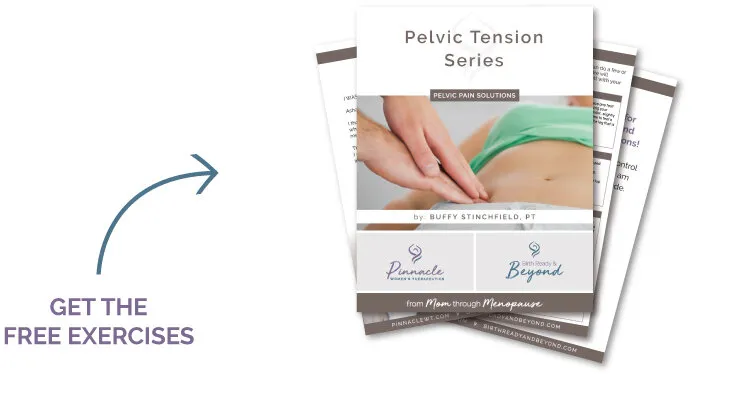Pelvic pain will affect almost half of ALL women at some point in their lifetime. And for many, this pain can be chronic, lasting for months and years. Symptoms can include painful periods, pain with inserting a tampon or with sex, pain with urination, pain with sitting or standing for too long, and more. Descriptions of pelvic pain can vary widely from ache to sharp pain or burning sensation. The burning sensation can even throw off a medical provider where they begin looking to diagnose a patient with an infection.
Though the types of pelvic pain can be so varied, the ONE most vital detail here is that this pain truly DISRUPTS a person’s quality of life. As a pelvic PT, I will first say that pelvic pain truly needs to be assessed by a pelvic pain specialist like myself, an orthopedic trained physical therapist with a specialization in pelvic floor health. But I will be giving some advice here as to what things we may be able to do now before you are able to see a pelvic PT.
1) Start the practice of belly breathing.
99% of ALL of my past pelvic pain patients have begun their journey with me with very poor breathing skills. They most often struggle with taking slow (at least 4 count) inhales and allowing their belly to let go and expand. Retraining this pattern takes practice, but it is 100% needed in a person’s pelvic pain recovery journey. Start with working on 5 minutes of eyes closed, comfortably positioned belly breaths. Breath slowly in for 4 counts, and out for 4 counts. Do NOT rush this.
2) Take note of how you position yourself during the day.
You could unknowingly be tensing muscles that feed into the pelvic floor muscle tension. This would include legs gripped together, belly sucked in, and even clenching your jaw. All of these things increase pelvic floor muscle tension. Then pick one thing you have identified you do and begin to catch yourself doing this.
3) Drink enough water.
When it comes to our bodies, proper hydration will always be an essential piece of our healthcare routine. When dehydrated, muscles will be more easily aggravated and possibly painful. The urine in the bladder will be more concentrated and acidic and can increase bladder pain. Most experts say that drinking abut half our body weight in ounces per day is a good baseline. That would mean that a 120 pound person should be drinking 60 ounces a day.
4) Take time to stretch.
The muscles that attach to our pelvis can sometimes be an aggravator to our pelvic floor tension. This can include our hamstrings, inner thighs, and hip flexors. People are often really surprised when we find that their inner thigh muscles are quite tender during their initial visit. Beginning to stretch gently and regularly could make a huge difference in our pelvic pain.
5) Find a way to regularly reduce your stress.
Stress can be a major contributor to our pelvic floor muscle tension and pain. Finding things that help you feel more at ease and less stressed are incredibly important. This could include walking or exercise, meditation, more time with girlfriends, or just more time doing nothing. The pelvic floor muscles are very closely linked with our fight or flight nervous system. If our nervous system is stuck on high alert or panic mode, our pelvic floor muscles will keep score of this and may even get stuck in this panic mode tense state. Our mind and body are inextricably linked and we will ALWAYS need to focus on both aspects of ourselves.
My hope is that you have read something here that gives you an idea for what you might feel ready to work on in your daily life. All of these elements may find their way into your treatment plan with your pelvic PT, but know that getting physically assessed by a trained professional will be crucial to making sure that your issue is fully understood by the person that can help you fully resolve it. We do work with other providers such as acupuncturists, chiropractors, surgeons and massage therapists, but it falls to us pelvic PTs to assess a person’s whole body movement systems, muscles (including pelvic floor), joints, and overall well being with regards to their pelvic pain.
Feel free to download our pelvic tension stretches HERE and contact us to schedule a virtual consult so that we can be sure your questions are answered and you can begin your journey to a life without pelvic pain.




